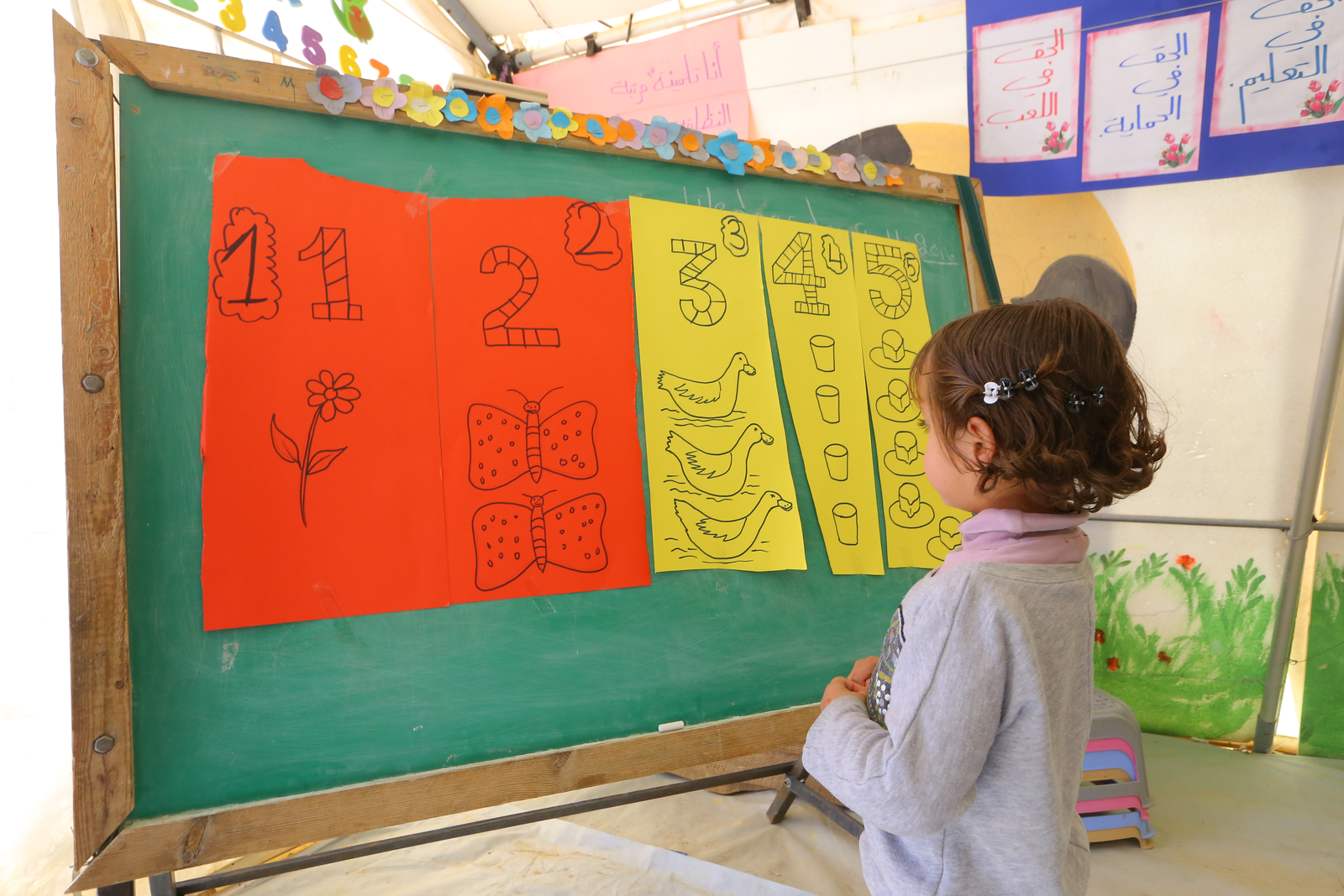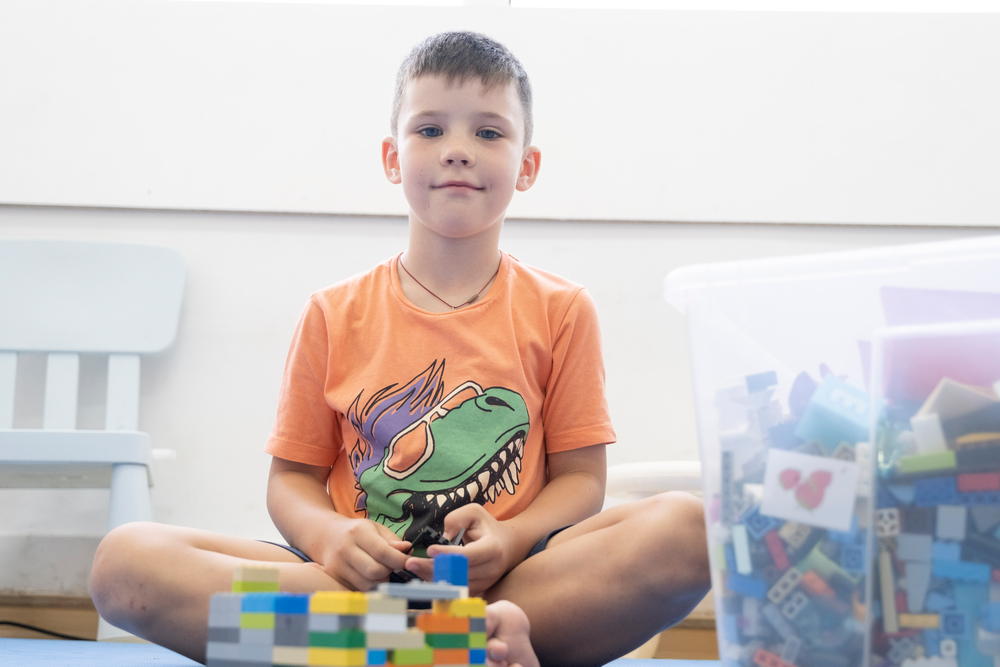
When disaster strikes: how education and children’s futures were battered by Cyclone Idai
Education in emergencies, Refugees and internally displaced people
An in-depth look at how the deadly storm and flooding has disrupted the schooling of half a million children in southeast Africa - and the efforts to rebuild.
First comes the shock and the terror. Then the fight for survival – to find food, water and shelter, and to avoid diseases.
But in the wake of a natural disaster, children very quickly need protection and education. Being in a safe learning environment with other youngsters is crucial if they are to begin to recover from the trauma.
Children who are out for school for a long time after a disaster are in danger of falling prey to child labour, early marriage, trafficking and other risks. Many will never return to education.
It’s a scenario repeated over and over as communities around the world fall victim to floods, earthquakes, landslides, hurricanes and other natural disasters.
“Nearly 40 million children a year have their education interrupted by natural disasters such as earthquakes and disease outbreaks,” said Theirworld’s recent report Safe Schools: The Hidden Crisis.
“The impacts on children and young people’s education can be profound, with the poorest and most marginalised, including girls, most at risk. The devastation is often most severe and long-lasting in contexts where education capacity and resources are already low.”
However, the report warned, “education is rarely a core focus in emergency responses”. It added: “The rebuilding of school infrastructure is often considered a secondary priority, resulting in children being educated in temporary learning centres for years after the event.”
What happens when disaster strikes?
The latest big-scale natural disaster was Cyclone Idai, described by the United Nations as “one of the deadliest storms on record in the southern hemisphere”. It struck southeast Africa a month ago, causing massive devastation and flooding in Mozambique, Zimbabwe and Malawi.
More than two million people – 1.8 million of them in Mozambique – were affected, thousands lost their homes and the death toll stands at over 1,000. Thousands of classrooms were damaged or destroyed and half a million children have had their education disrupted.
“For children affected by Cyclone Idai, the road to recovery will be long,” said UNICEF Executive Director Henrietta Fore said. “They will need to regain access to health, education, water and sanitation. And they will need to heal from the deep trauma they have just experienced.”
Here we look at how Cyclone Idai has affected education in those three countries and what efforts are underway to get children back into safe schools as quickly as possible.
Emergency education aid
More than 500,000 children and youth will get emergency education thanks to a $14 million funding package. Half of that will come from Education Cannot Wait – the fund for education in emergencies – $5.2 million from the United Kingdom’s Department for International Development and $2 million from the organisation Dubai Cares.
“A sudden and unexpected natural disaster of this magnitude causes immense human suffering. For a child or adolescent, the losses are especially devastating,” said Yasmine Sherif, Director of Education Cannot Wait.
“Unless education services are given priority, the suffering will be prolonged and cause deeper disruption and trauma in their lives.”
Psychosocial support
It’s not just about providing education. Making children feel safe and able to cope with their trauma is crucial too.
“When the situation is terrible, like Cyclone Idai, education can give children a sense of normalcy,” Kenji Ohira – UNICEF Education Specialist in Maputo, Mozambique – told Their News.
“UNICEF, through Save the Children, is providing psychosocial support training to teachers who would take care of their students. While the scale is not large enough in the medium term, we are planning to expand this support.”
Maria Waade, Save the Children’s Mental Health and Psychosocial Support Specialist in Mozambique, said: “We are extremely concerned about the long-term wellbeing for the children in the aftermath of this devastating cyclone.
“Seeing everything you love and know being destroyed in the blink of an eye is a horrific experience that no child should have to live through – and the impact will be felt by children long after the floodwaters recede.”
Mozambique: situation report
- 600 schools destroyed, 3,504 classrooms damaged or destroyed, according to the government and Education Cluster.
- 335,000 children have had their education disrupted as a result of the cyclone.
Celina, 14, wants to be back at school with her friends. The irony is that, after her family home was destroyed by the cyclone, she is living temporarily at a school in the city of Beira. Thousands like her are sheltering in those schools that survived.
“I want to go back to school. I wish I could be at home with my friends,” she said. “I don’t know how things will be in the future. They want to move us out of the school so classrooms can restart and we don’t know where we will go.”
UNICEF is helping to provide emergency education in the aftermath of the cyclone and flooding.
“In the short term, UNICEF and other partners are providing educational supplies such as learners’ kits, school-in-a kit, early childhood development (ECD) kits, chalkboards etc,” said UNICEF’s Ohira. “This is along with temporary learning centres.
“We are expecting to reach at least 107,000 children through these supports. However, this is only a third of affected children, based on the education ministry’s estimated figure – so UNICEF and partners are doing their best to mobilise funds to reach as many affected children as possible.”
Tarpaulin classrooms are seen as a temporary measure and work will need to begin on more permanent solutions within a few months. Even those schools and classrooms that were not badly damaged will need to be cleaned and disinfected before children can resume lessons.
“It is not only children who suffered. So did teachers,” added Ohira. “One cannot forget teachers. UNICEF is proposing the education ministry and donors include short-term financial support for affected teachers to help them re-establish their own lives and get back to school.
“The country has already been struggling with low learning achievement. Only 4.9% of Grade 3 students can read and 7.7% can do basic calculations. The ongoing disaster will not help and the dropout rate may increase.”
The charity World Vision is also establishing temporary learning spaces so children whose schools are damaged or used as shelters can continue to be educated.
Carey Lodge, World Vision UK Media Manager, went to Mozambique to assess the situation after the cyclone. She told Their News: “In some areas schools are still functional but conditions are poor. Classes are being held in classrooms without roofs and or under trees.
“In Beira, the worst hit area in Mozambique, the government needs funding to repair school infrastructures and replace equipment for teachers and students. Unfortunately it’s a challenge to say how long this will take, as there is so much to be done.”
World Vision has set up a child-friendly space at a primary school in Beira.
“It’s wonderful to see children playing, singing, playing sport and to hear so much laughter,” said Frieda Mwebe, World Vision’s Child Protection Specialist. “The displaced children have been through so much hardship, so being able to offer this place to children means they can forget about their troubles for a few hours.”
Caritas – the organisation of Catholic relief and development agencies – talked to teacher Veronica Mavundo in Beira. Her third-grade classroom was destroyed.
She said: “When I got here, it was worse than I feared – there was so much water. The classrooms were filled with water. It was overwhelming. Even all of our teacher residences have been destroyed.
“We will start teaching outside until the roofs of the other buildings are complete. It’s difficult to teach outside. We won’t have our blackboards, our maps, our clipboards. But it is a new experience we have to face.”
Aid workers in Mozambique are particularly worried about orphaned children and those separated from their families.
Rik Goverde from Save the Children said: “Children are out there on their own – without the supervision or care of a trustworthy adult. They can easily fall victim to sexual violence or human trafficking. We are aware and very concerned about it.”
Zimbabwe: situation report
- 139 schools damaged but reports have still to come in, said UNICEF.
- 90,000 children are having their education disrupted.
Schools are currently closed for the holidays. But UNICEF is helping to ensure damaged classrooms are ready to open when the new term begins on May 8.
The Ministry of Primary and Secondary Education is also setting up temporary classrooms and getting ready to distribute learning materials.
“Tents have been procured to establish safe learning spaces where classrooms have been damaged. Teaching and learning materials including text books, along with early childhood development and recreational kits, have been ordered and will arrive soon,” said Denise Shepherd-Johnson, UNICEF Zimbabwe’s Chief of Communications in the capital Harare.
“Psychosocial materials have been developed by the ministry with support from UNICEF to be used by teachers in the classroom. Support to counselling for children and teachers is being provided.”
The UN agency is also working with the government and civil society organisations to coordinate child protection services.
“World Vision will train teachers and pastors on psychosocial support so that they provide care and support for those affected by the cyclone,” said Carey Lodge. This will be done through a grant funded by Education Cannot Wait.
“Schools damaged by the cyclone will need to be repaired, and furniture and teaching and learning materials replaced. There are a number of risks – children are more vulnerable to abuses due to the breakdown of family structures and the lack of food and other necessities.”
Malawi: situation report
- 104 schools hosting people displaced by floods.
- 77,134 children out of school, according to government figures.
UNICEF has provided tents, school-in-a box kits and recreation kits to provide safe learning spaces for children whose schools have been damaged or occupied by displaced people.
The agency said over 170 schools are affected (flooded or occupied) in Chikwawa, Phalombe, Nsanje and Zomb districts. This has resulted in overcrowded or non-operational schools, affecting an estimated 77,000 students.
World Vision will establish temporary learning spaces in the same way that it’s doing in Mozambique. The charity is also conducting awareness campaigns on ending child marriage as one way of keeping children – especially girls – safe until their learning resumes.
“In any crisis of this nature where schooling is disrupted, there is a risk that children and families will turn to negative coping strategies,” said Carey Lodge.
“These can include early marriage, the use of substances and the development of negative social groups. Education is a lifesaving intervention as it provides immediate protection to children by providing them a safe space to spend time and learn.”

More news

Theirworld’s mission to give children in crises a safe place to learn
